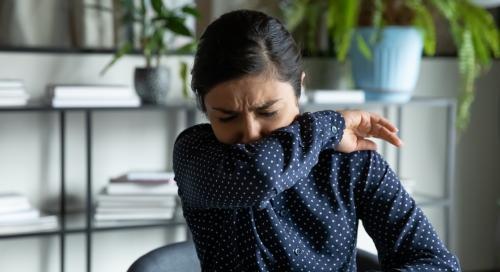Although now rare, anthrax was once an occupational hazard in the production of traditional building materials. The disease is caused by Bacillus anthracis, a spore-forming bacterium that can survive in the environment for decades. During the 19th and early 20th centuries, animal hair from horses, cattle, and goats was commonly used to reinforce plaster and lime-based renders. If the hair came from infected animals and was not properly sterilised, it could carry dormant anthrax spores into the finished materials.
Today, the risk of exposure is very low, but certain historic buildings may still contain viable spores within plaster, insulation, or render. Disturbing these materials during refurbishment or demolition could pose a health risk if the appropriate precautions are not taken. At Envirochem, we offer UKAS-accredited testing to identify anthrax spores in suspect materials. Our consultants work with you to assess risk levels and advise on proportionate, evidence-led control measures in line with current safety and heritage guidance.
What We Test For
We test a range of historic and heritage materials for the presence of viable Bacillus anthracis spores, including:
- Horsehair plaster and lime renders used in ceilings and walls
- Animal hair insulation or stuffing in lath-and-plaster constructions
- Historical building materials from pre-1930s refurbishment or demolition sites
- Debris or dust generated by disturbance of suspect plaster
Samples are analysed under controlled conditions using microbiological techniques to detect the presence of anthrax spores, with confirmatory identification if required.
Our Process
Each project begins with a consultation to understand the building's age, materials, and planned works. If anthrax risk is suspected, we provide guidance on safe sampling methods to avoid unnecessary exposure, and can attend site to collect samples directly.
All testing is carried out in line with strict laboratory protocols in a UKAS-accredited facility (No. 1227). If spores are detected, we help you assess the level of risk and recommend proportionate measures, which may include encapsulation, licensed removal, or contractor-specific PPE and procedures.
We also work with project teams and heritage consultants to support safe remediation or refurbishment in line with conservation needs.
When Is Testing Required?
You may require anthrax testing if:
- Your building contains original plasterwork or renders dated pre-1930s
- You are planning works that will disturb horsehair plaster or similar materials
- The property has a history of agricultural, veterinary, or tannery use
- There are unexplained health symptoms or contamination concerns linked to older plaster
- You are working on a listed or heritage site requiring sensitive, evidence-led intervention
If you’re unsure whether anthrax testing is appropriate for your site, our consultants can help assess the likelihood and advise on a safe course of action.
Compliance and Risk Considerations
Anthrax is a notifiable disease and a serious biological hazard. Although dormant spores pose little risk when undisturbed, they can become a significant health threat if inhaled during refurbishment or demolition. Where this risk is foreseeable, it must be assessed and managed appropriately.
UK guidance from the Health and Safety Executive (HSE) outlines the responsibilities of employers and contractors when working with suspect materials. Under the Control of Substances Hazardous to Health (COSHH) Regulations, and the Construction (Design and Management) Regulations 2015, there is a legal duty to assess and control biological risks during construction activity.
Failure to identify or manage anthrax contamination could lead to site closure, enforcement action, reputational damage, or health consequences for workers and the public. Early testing provides clarity, reduces liability, and supports the safe planning of heritage or high-risk refurbishments.
Why Choose Envirochem?
At Envirochem, we understand that dealing with rare biological hazards requires calm, evidence-led advice. Our team includes experienced consultants and microbiologists who are familiar with the history and pathology of anthrax in building materials — and with the importance of discretion when working on sensitive sites.
Because we operate a UKAS-accredited testing laboratory (No. 1227), we provide reliable, defensible data with fast turnaround times. We’ll work with your project team, conservation body, or contractor to ensure any risks are addressed proportionately and practically. Whether you’re managing a historic estate, surveying a heritage site, or planning sensitive refurbishment works, our testing helps you make informed decisions and maintain control over site safety.
Speak to Our Team
If you believe your site may contain historic materials at risk of anthrax contamination, get in touch with our expert team. We’ll help you assess the likelihood and determine whether testing is necessary for safe and compliant project delivery.




